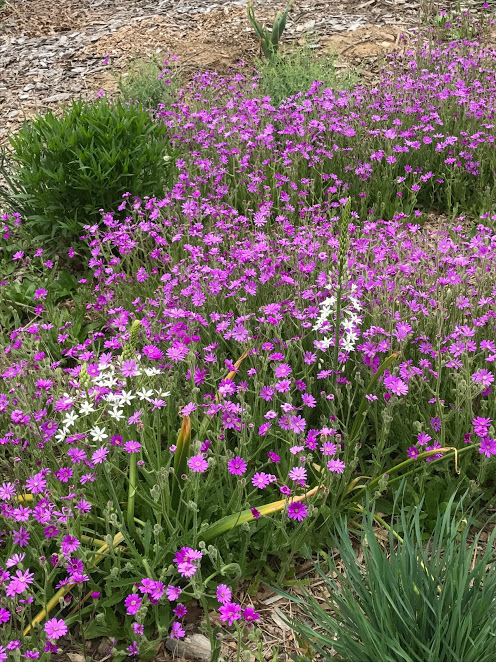The third species is not yet identified, but came from the Tiffindell ski resort area of the Drakensberg so I refer to it as Senecio sp. "Tiffindell". It is the only one of the three species that is stoloniferous in addition to self sowing. So it is able to grow into a large patch rather quickly. It flowers quickly, within a few months from seed. Flowers are bigger than S. polyodon but a bit smaller than S. macrocephalus. It does a mass flowering right now, with sporadic blooms appearing the rest of the season. It is at least as vigorous as S. macrocephalus in my garden, and while it might not out compete the latter since its leaves are not as large, its ability to spread by thin stolons does give it an advantage over the other two species.
All three species are readily grown from seed and appear to be quite cold hardy. They do not appear to be hybridizing as far as I can tell, though they are rather similar in appearance and in peak bloom time. They also like moist soil, though they do tolerate some drought in summer after their main flowering period. Lately it has been quite cool and rainy, in fact this is probably one of the coolest and wettest springs I can remember, and all three senecios are doing extremely well. The mild winter also resulted in practically no dieback of the foliage so that helped too. None of them like really hot weather, though they don't suffer much here in New York but I am not sure if they could deal with the summertime heat of places like North Carolina. As with most Asteraceae it is best to grow a few plants from seed to ensure that fertile seed is set as many Asteraceae are self infertile. Individual plants of these senecios may not live beyond a few years so having seed as a backup (or seedlings coming along, which will happen if there is bare ground nearby) is the best way to ensure that one will be able to enjoy swathes of senecios for years to come.





No comments:
Post a Comment